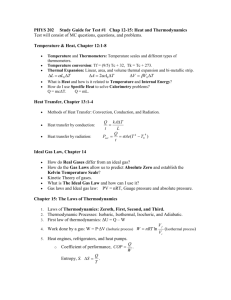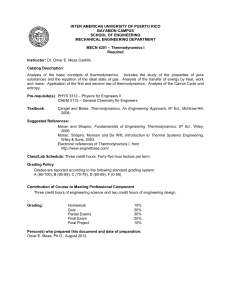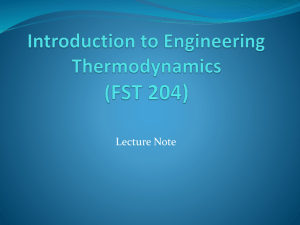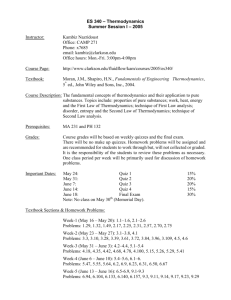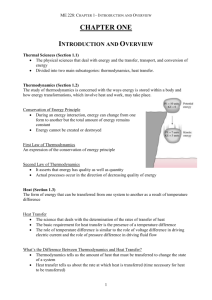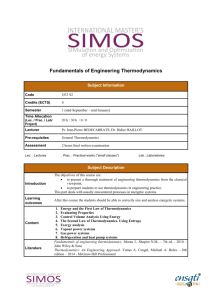Clarifying Statements - North East Independent School District
advertisement
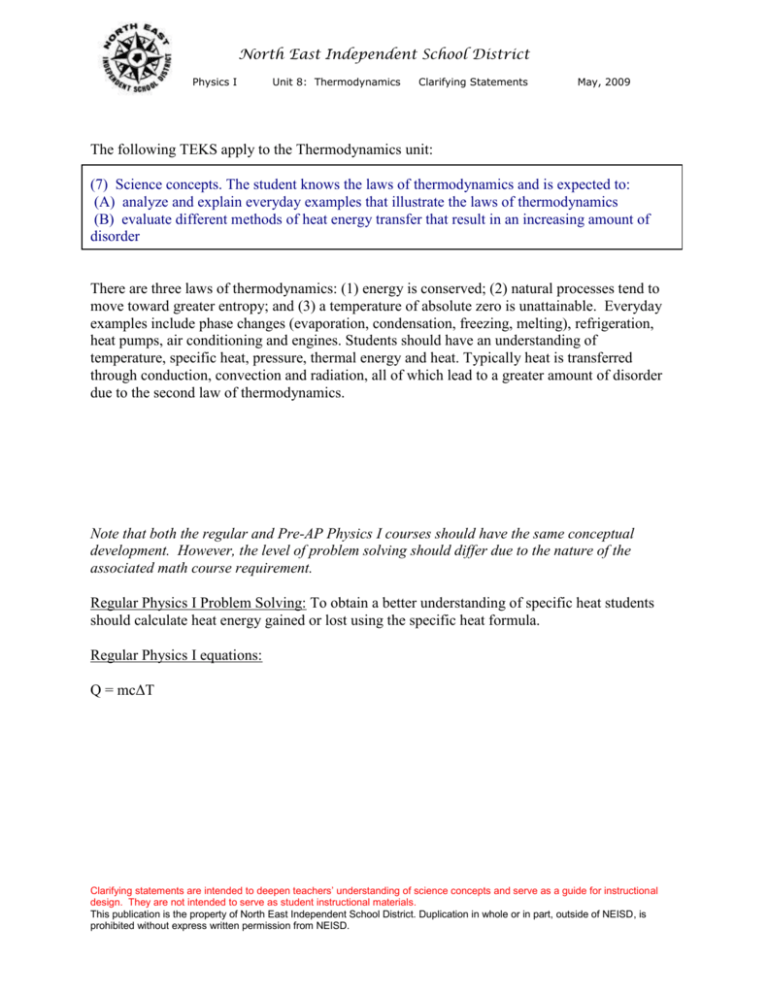
North East Independent School District Physics I Unit 8: Thermodynamics Clarifying Statements May, 2009 The following TEKS apply to the Thermodynamics unit: (7) Science concepts. The student knows the laws of thermodynamics and is expected to: (A) analyze and explain everyday examples that illustrate the laws of thermodynamics (B) evaluate different methods of heat energy transfer that result in an increasing amount of disorder There are three laws of thermodynamics: (1) energy is conserved; (2) natural processes tend to move toward greater entropy; and (3) a temperature of absolute zero is unattainable. Everyday examples include phase changes (evaporation, condensation, freezing, melting), refrigeration, heat pumps, air conditioning and engines. Students should have an understanding of temperature, specific heat, pressure, thermal energy and heat. Typically heat is transferred through conduction, convection and radiation, all of which lead to a greater amount of disorder due to the second law of thermodynamics. Note that both the regular and Pre-AP Physics I courses should have the same conceptual development. However, the level of problem solving should differ due to the nature of the associated math course requirement. Regular Physics I Problem Solving: To obtain a better understanding of specific heat students should calculate heat energy gained or lost using the specific heat formula. Regular Physics I equations: Q = mcΔT Clarifying statements are intended to deepen teachers’ understanding of science concepts and serve as a guide for instructional design. They are not intended to serve as student instructional materials. This publication is the property of North East Independent School District. Duplication in whole or in part, outside of NEISD, is prohibited without express written permission from NEISD.



